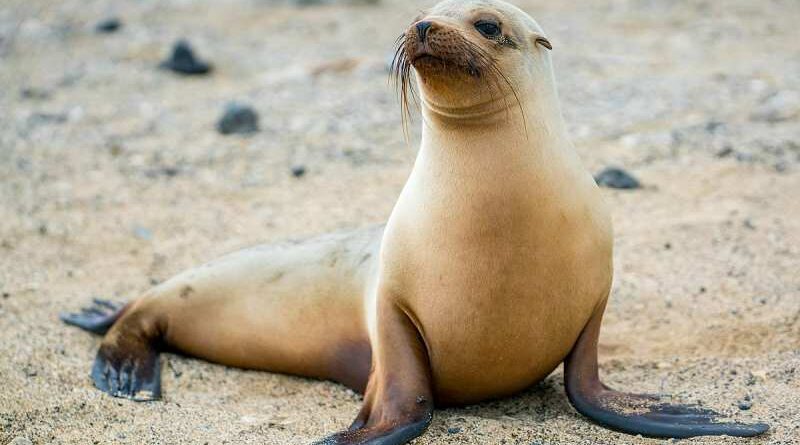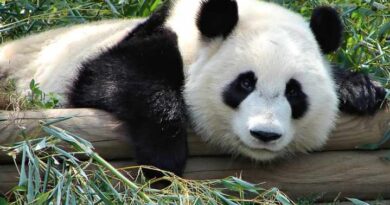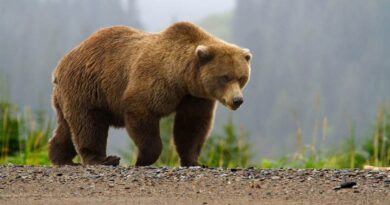SEALION
Back when performing animals were still popular at the circus, sealions were among the crowd’s favourites. They played instruments by blowing into them, balanced beach balls on the tips of their noses, and got the crowd to clap by slapping their flippers together. People were amazed by how smart they were and how well they could do acrobatics. People who went to the circus were SO surprised by the sealions’ skills because, at first glance, the animals seemed so clumsy. They walked awkwardly into the circus ring on their flippers, pulling themselves along as best they could with their heavy bodies.
Children laughed at them because they looked like they couldn’t do anything. Then, all of a sudden, these big, fat bodies started moving in a delicate, graceful way as part of their act. The difference was amazing. It was like seeing a big wrestler try to dance ballet. How did you explain it? To find out, we need to study sealions in the sea, not on land. There, it’s easy to figure out what their secret is. Once they get in the water, their bodies, which are so awkward on land, become very athletic and skilled. When they chase a school of fish, sealions’ necks twist and turn so quickly and precisely that it’s easy to see how they can balance a ball on their nose.
As the fish dart around trying not to get caught in their jaws, the sealions must move at lightning speed to keep up with them if they want to catch their prey. And they do catch them—a lot of them every day. An adult sealion can eat up to 18 kg of fish in a day. These smart, funny, and curious hunters didn’t always live in the sea. They came from animals that lived on land. They went back to the water at some point, millions of years ago, and their bodies changed shape. Their legs changed into flippers, they slimmed down, and they got a thick layer of blubber. Under their short, smooth fur, they have about 10 centimetres of blubber now. This fat keeps them warm in the sea because it acts like a heavy coat. If they didn’t have it, they would die soon from the cold.
One problem with being covered in blubber is that even though it keeps out the cold, it can also make it hard to cool down when it’s hot. Most seals live in colder waters and don’t have to make about getting too hot, but some, like the Californian sealion, live in warmer members.
There must be a special way for them to keep from getting too hot. The answer can be found in their flippers. These are on large areas of skin that are not covered. Just below the skin, there are a lot of blood vessels, and the seals can increase how much blood flows through these vessels. The faster a sealion can cool down, the more heat it loses and the hotter its blood that passes close to the skin’s surface. One of the strangest things to see is a family of sealions all lying in the water together, with their flippers sticking out of the water. When breezes hit them, these “sails” move around in the air to increase the cooling.
All seals have developed special valves that allow them to close off their noses. When the seal or time sealion dives, this happens on its own. Also, the back of the throat passage can be blocked by moving the tongue up. This means that when the animal is swimming underwater, it can open its mouth and use its sharp teeth to catch fish without having to worry about swallowing seawater or choking. Sealions and seals are related in a lot of ways, but they are easy to tell apart.
Sealions have small ears that stick out from the sides of their heads. The only part of a seal’s ear that can be seen is a small hole on the side of its head. Sealions can walk on land by turning their back flippers forward and using them like short legs. Seals can’t do this, so they have to drag themselves along with their front flippers while their fat bodies bounce on the rocks. Sealions can hold their breath for about 5 minutes, but they dive so well and quickly that they can get to depths of over 60 metres in a short amount of time.
Some other seals can do much better than this. They can stay underwater for ten times as long and go ten times deeper. But while these other seals may be better at swimming in the sea, the sealion is better at moving on land. It can gallop clumsily around the beaches when it comes ashore because it is better at moving.
Seals and sealions have to breed on land, while whales and dolphins can do it in the water.
When it’s time for them to mate in the spring, the male sealions meet on a piece of land. You can hear their barking and honking from a long way away. Each man tries to defend the part of the beach that he thinks is best.
At the end, all of the males are spread out along the shore, waiting for the females to show up. When they get to shore, all of the females are very pregnant because they got there late. Each man tries to get as many as possible. Most top males can build up a harem of about 20 females, which they then have to protect from other bulls. There will be a lot more calling, showing off, and threatening. Fights happen all the time, and the bulls often get hurt badly.
They have thicker, heavier necks than the females, and the extra fat on their necks makes it harder for the strong jaws of other males to hurt them. It’s not unusual to see a tired warrior with deep cuts and blood running down his body. As soon as they reach land, the females have their babies. Each cow has one calf, and the calves soon start to drink their mothers’ milk and feel good.
Life is not too peaceful for them, though, because when they fight, the big males charge back and forth and sometimes crush a baby sealion to death with their huge weight. Because the bulls are so much bigger than the cows, the mothers can’t do much to protect their young. But most of them make it, and when they are old enough, they go to sea for the first time.
In the meantime, their mothers will have mated with the big bulls again, and soon they will all leave to feed for the rest of the year. For about a year, the babies stick close to their mothers. They have an easy life because there are lots of fish to eat. There are always other things to eat, like octopus, squid, and the occasional seabird, to keep things interesting. There are six kinds of sealions that are still alive today, and they are all closely related. The Californian sea sealion, which lives all along the west coast of North America, is the one we know the most about. This is one of 50,000. The Galapagos sealion, which is related to it, lives only on the Galapagos Islands, which are in the middle of the Pacific Ocean.
Only 40,000 of these exist. The New Zealand sea sealion and the Australian sea sealion are the two rarest. There are only about 4,000 of each left (even fewer, only 3,000 left). There are 270,000 South American sealion lions and 250,000 Steller’s sealion lions in the north Pacific. These are the two most common sea lions. Even though humans are hurting a man of other big animals, it’s good to know that sealions are doing well in our modern world.



